Internal Streets
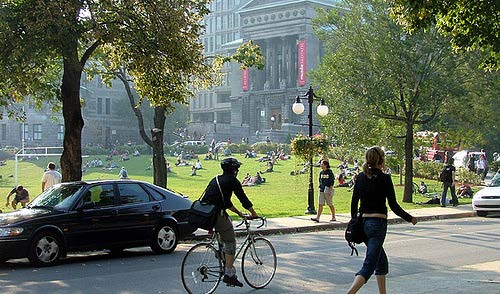
The internal campus streets are important in connecting Brandon University with the surrounding neighbourhood and in making the campus accessible to the community. They should function as walkable, animated pedestrian spaces. As such, the design of the streets focus on prioritizing the pedestrian while accommodating all modes of traffic including pedestrians, bicycles, cars, and transit. In addition, the streets have to function as habitable spaces for lingering, sitting, connecting open spaces, waiting for a bus, and hosting events. They are also the opportunities for sustainable design including storm water management and LID design.
Louise Avenue
Louise Avenue functions as the main entrance and introduction into the Campus, and provides the first impression and feel of the campus environment. As such, the profile of this street must reflect the quality, character, and identity that is representative of the Vision for BU. Together with new gateway buildings, Louise Avenue must support clear wayfinding and passage into the Campus’ core, connecting to 20th Street and access to parking amenities. It is also the first introduction to the Campus’ high-quality open spaces, as it is a key component of the Lower Plaza – Healthy Living Centre Plaza. Louise Avenue is the seam that stitches the south campus quadrant to the rest of the campus north, providing several enhanced pedestrian crossings that connect to the buildings and open spaces that frame the street.
Policies:
- Louise Avenue must be designed to create a seamless continuity between the north and south campus quadrants with multiple pedestrian crossings and continuous materiality across the street.
- Design Louise Avenue to accommodate a high degree of pedestrian movement between the buildings and open spaces that define it.
- The profile for the street should be beautiful and inviting, with a full canopy of trees and landscaping on both sides of the street.
- Provide on-street parking in lay-by spaces integrated between parking bump-outs.
- Parking bump-out areas along the Avenue are the pedestrian crossing points, which should provide clear uncluttered passage and include wayfinding signage.
- Maintain the dedicated drop-off and pick-up zone fronting the Healthy Living Centre.
- Integrate the Healthy Living Centre front plaza into the streetscape design for Louise Avenue.
- Consider raised cross-walks at the crossing points as traffic calming measures.
- Provide a minimum 4.0m building setback on either side of the road for any new building for additional landscaping, tree planting, sidewalks space, furnishing, and art.
Existing Louise Avenue Cross-Section at Flora Cowan Hall:
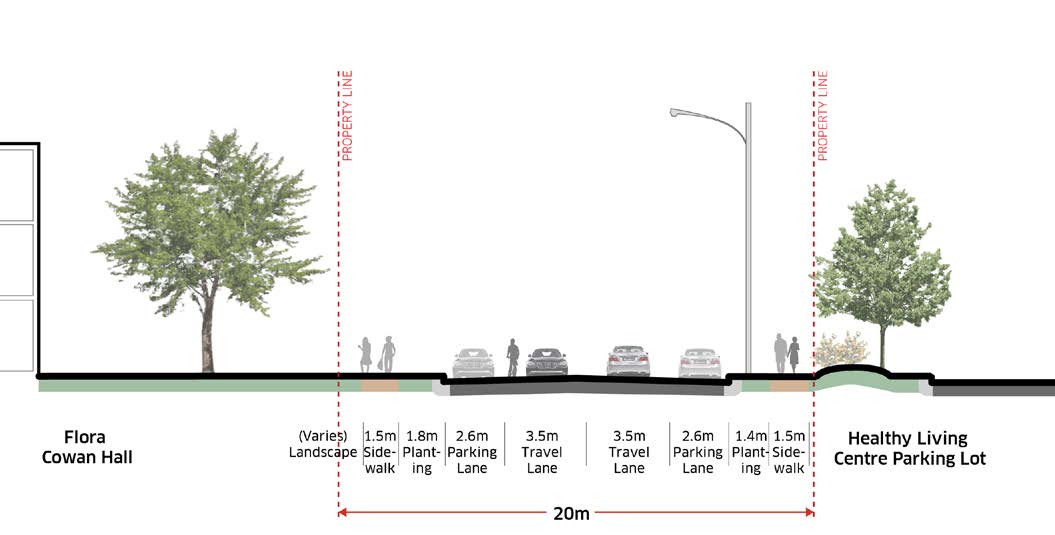
Proposed Louise Avenue Cross-Section at Flora Cowan Hall:
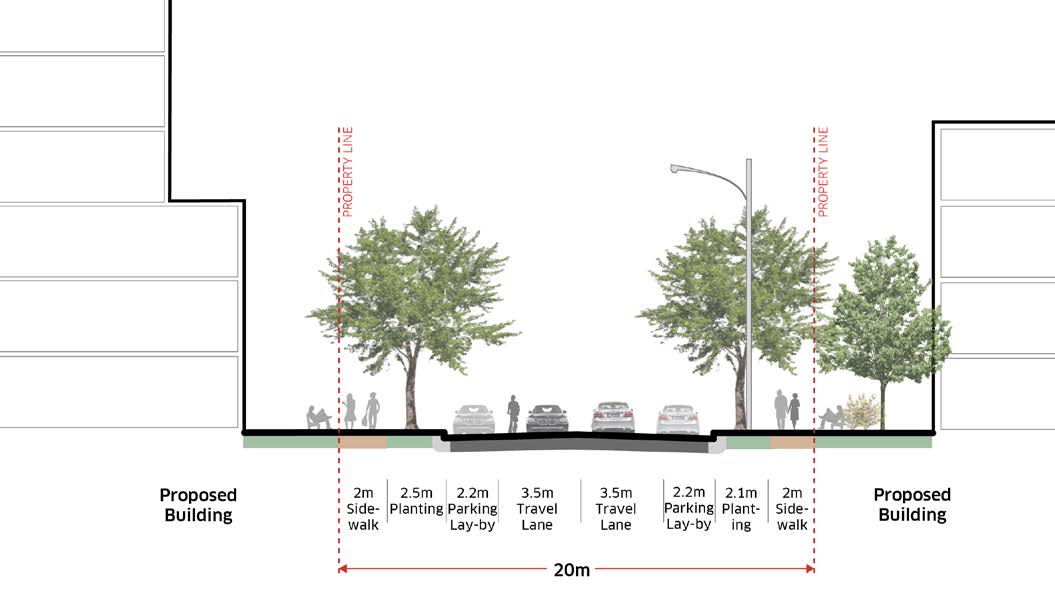
Existing Louise Avenue Street Cross-Section at Darrach Hall:
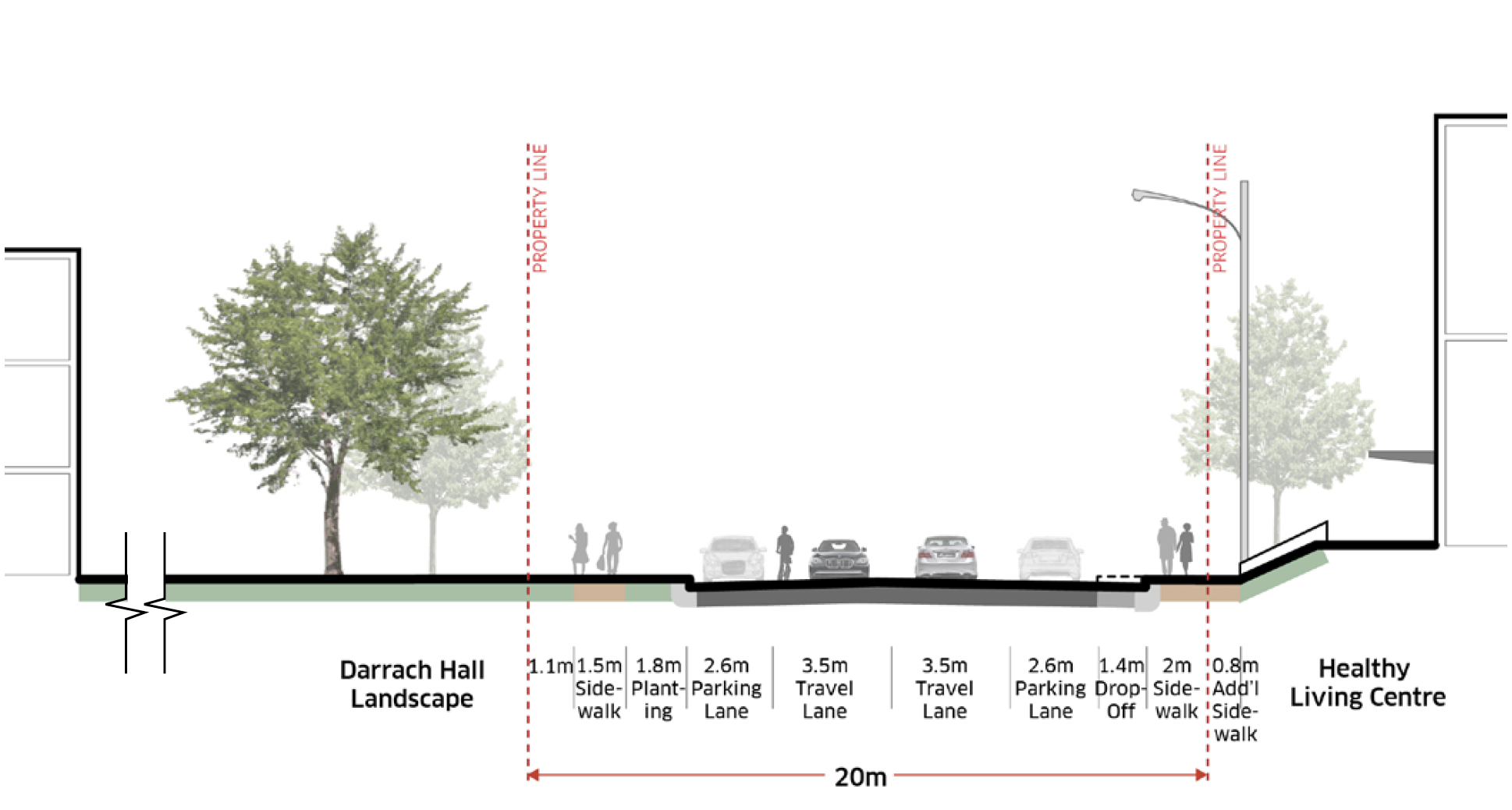
Proposed Louise Avenue Street Cross-Section at Darrach Hall:
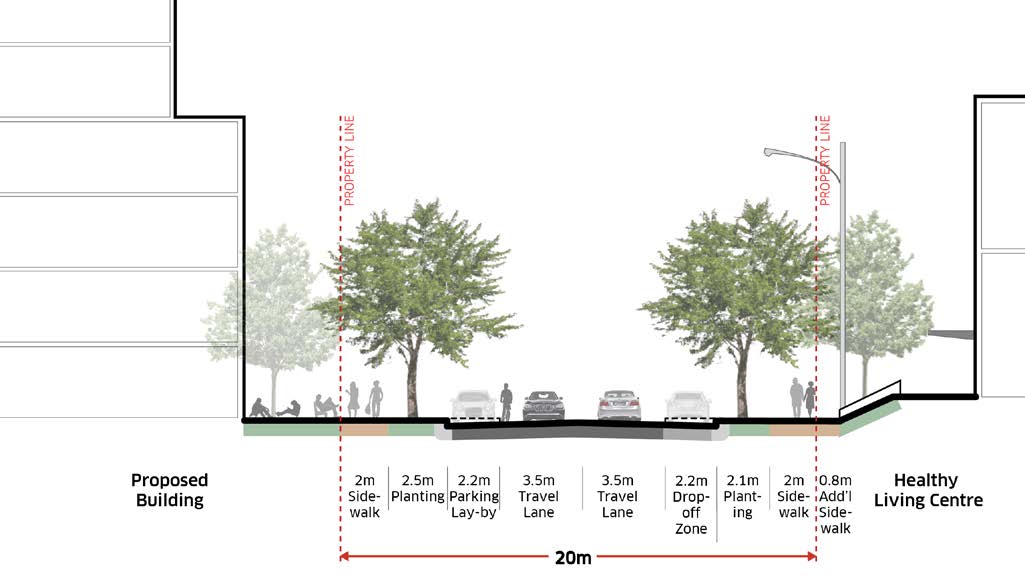
Elements of the Louise Avenue Right-of-Way
- 20.0m R.O.W.
- 11.4m roadway, which includes one 3.5m travel lane in either direction to accommodate shared vehicular, cycling, and transit circulation, and 2.2m on-street parking lanes on either side of the street.
- 2.2m dedicated drop-off and pick-up zone fronting the Healthy Living Centre.
- 2.5m planting and furnishing zone on the north side of the street and 2.1m on the south side of the street, with street trees and shrub landscaping in at-grade planting beds, and street furnishing such as benches, pedestrian scale lighting, garbage receptacles, and signage.
- 2.0m sidewalk on either side of the road.
20th Street
20th Street is an important street in the Movement Framework. It is envisioned as a beautiful, walkable, intimate two lane tree-lined corridor, with generous sidewalks, slow moving traffic, lay-by parking, and enhanced streetscaping and pedestrian crossings. It is the “string of pearls” connecting a series of significant and unique campus open spaces, and is the point of connection with the neighbourhood streets, parking amenities, and linkages to the Campus.
Policies:
- Design 20th Street to accommodate a high degree of pedestrian movement between the buildings and open spaces that define it.
- The streetscape design should allow for street closure for events and festivals.
- Provide on-street parking in lay-by spaces integrated between parking bump-outs. Parking bump-out areas should function as places for additional landscaping, wayfinding signage, art, and street furnishing such as benches and bike parking.
- Provide a minimum 4.0m building setback on either side of the road for any new building for additional landscaping, tree planting, sidewalks space, furnishing, and art.
- Provide signage and clear visibility along the street to structured parking and below grade parking access points within buildings, and to service corridors access points throughout the Campus.
Existing 20th Street Cross-Section at Physical Plant Building:
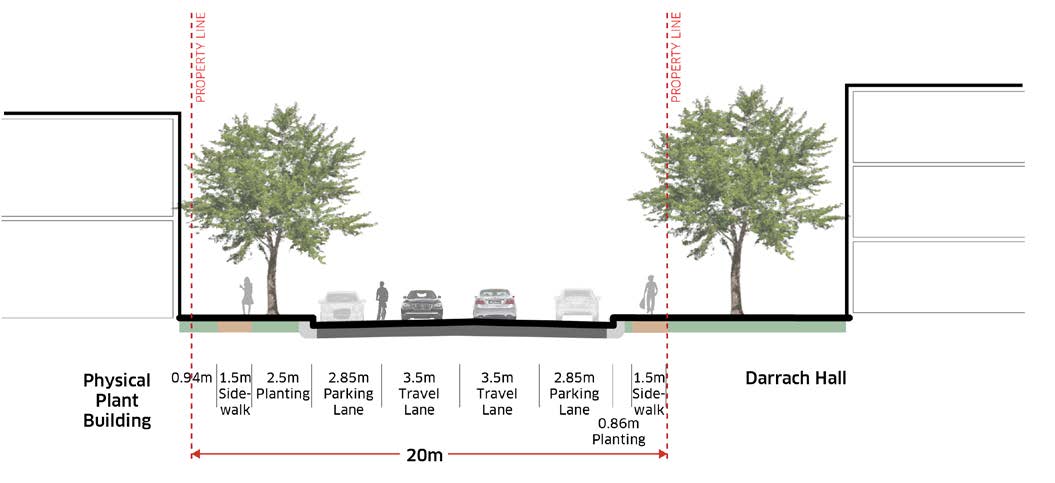
Proposed 20th Street Cross-Section at Physical Plant Building:
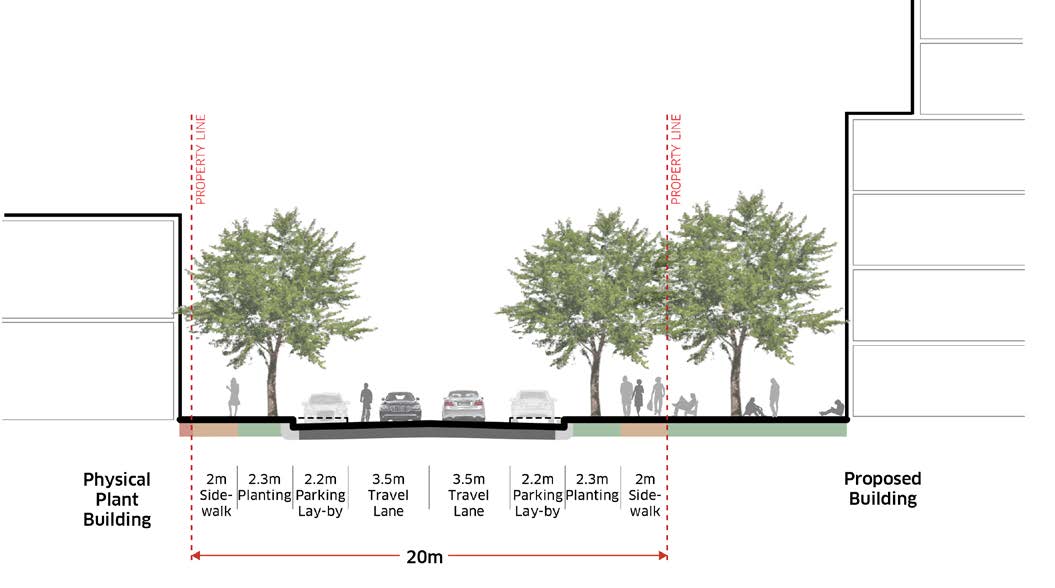
Elements of the 20th Street Right-of-Way
- 20.0m R.O.W.
- 11.4m roadway, which includes one 3.5m travel lane in either direction to accommodate shared vehicular, cycling, and transit circulation, and a 2.2m on-street parking lane (including curb and gutter) integrated in parking lay-by bays.
- 2.3m planting and furnishing zone on either side of the street with street trees and shrub landscaping in at-grade planting beds, and street furnishing such as benches, pedestrian scale lighting, garbage receptacles, and signage.
- 2.0m sidewalk on either side of the street.
